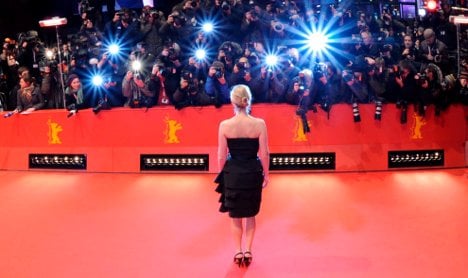Following the announcement of fresh releases by Roman Polanski and Martin Scorsese at this year’s event, the Berlinale said in a statement on Wednesday that it had nearly completed the selection of 26 films for its main programme.
The festival, which will kick off February 11 with Chinese film-maker Wang Quan’an’s “Apart Together” (Tuan Yuan), will also see the world premiere of “Greenberg” by US indie star Noah Baumbach (“The Squid and the Whale”).
In it, Stiller leads a cast including Jennifer Jason Leigh and Rhys Ifans playing a New Yorker who flees to Los Angeles to work through a life crisis.
Moore and Annette Bening star in Lisa Cholodenko’s US-French production “The Kids Are Alright” about two children born as a result of artificial insemination who seek out their biological father.
Provocative British director Michael Winterbottom, a favourite on the festival circuit, will screen “The Killer Inside Me” with Alba, Casey Affleck and Kate Hudson in the story of a Texas sheriff’s dark secret. Winterbottom clinched Berlin’s coveted Golden Bear top prize in 2003 for his refugees drama “In This World,” but “The Killer Inside Me” will screen out of competition.
Depardieu is expected in the German capital for the world premiere of the competition film “Mammuth” by Benoit Delepine co-starring Isabelle Adjani.
Rob Epstein, director of the acclaimed 1984 documentary “The Times of Harvey Milk,” will present the competition entry “Howl” starring Franco as the beat poet Allen Ginsberg.
Catherine Keener, Amanda Peet and Rebecca Hall lead the cast of “Please Give” by US film-maker Nicole Holofcener (“Friends With Money”) about real estate wars in New York. It will screen out of competition.
The festival will also spotlight Asian cinema this year, with Wang’s “Apart Together” as the opener and “About Her Brother” (Otouto) by Japanese master Yoji Yamada bringing down the curtain on the event.
Chinese veteran Zhang Yimou (“Hero”) will present “A Woman, a Gun and a Noodle Shop” while Koji Wakamatsu of Japan will premiere “Caterpillar.”
Another picture sure to attract crowds is German director Oskar Roehler’s “Jud Süss” about the making of the notorious Nazi-era anti-Semitic film of the same name. The new film stars Moritz Bleibtreu as Hitler’s propaganda chief Joseph Goebbels.
The Berlinale ranks second after Cannes among Europe’s top film festivals. Its Golden and Silver Bear top prizes will be awarded at a gala ceremony on February 20 before the event closes the next day.
Polanski, who is awaiting possible extradition to the United States on charges of unlawful sex with a 13-year-old girl, has been completing the Berlin competition entry “The Ghost Writer” while under house arrest in Switzerland.
The picture’s stars Ewan McGregor and Pierce Brosnan are awaited in Berlin alongside Leonardo DiCaprio with Scorsese’s new thriller “Shutter Island” and Bollywood heartthrob Shah Rukh Khan appearing in “My Name is Khan.”



 Please whitelist us to continue reading.
Please whitelist us to continue reading.
Member comments